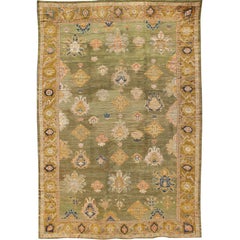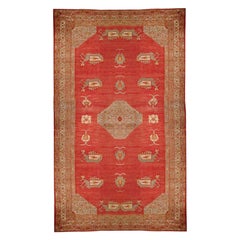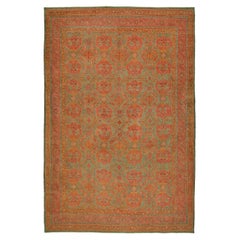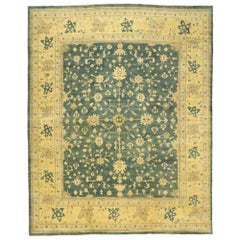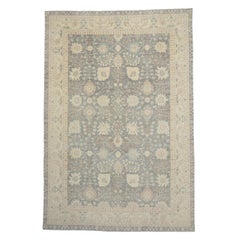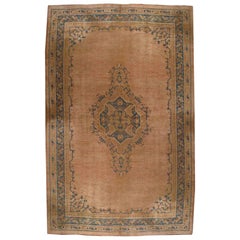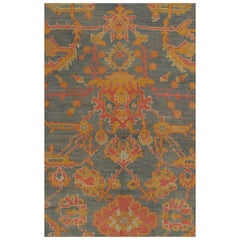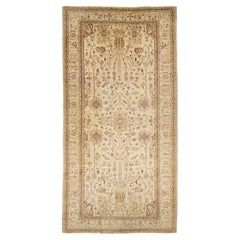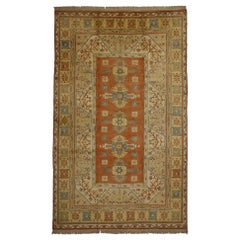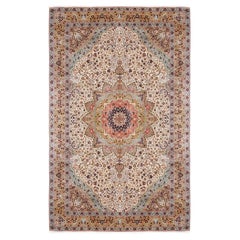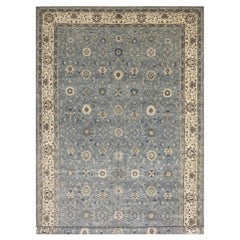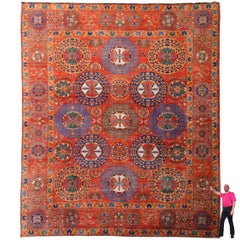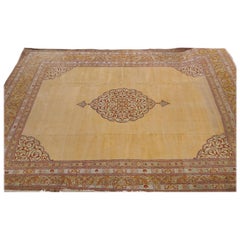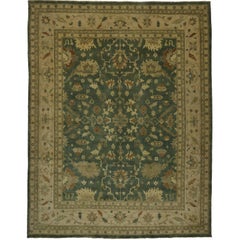Palace Size Oushak Rug
Antique Early 1900s Turkish Oushak Turkish Rugs
Wool
Antique Late 19th Century Turkish Oushak Turkish Rugs
Angora
Early 20th Century Turkish Oushak Turkish Rugs
Wool
21st Century and Contemporary Indian Oushak Turkish Rugs
Wool
21st Century and Contemporary Pakistani Oushak Turkish Rugs
Wool, Cotton
Early 20th Century Turkish Edwardian Turkish Rugs
Wool
Antique 19th Century Turkish Oushak Turkish Rugs
Wool
21st Century and Contemporary Pakistani Oushak Indian Rugs
Wool
Late 20th Century Turkish Mid-Century Modern Turkish Rugs
Wool
Vintage 1970s Turkish Oushak Turkish Rugs
Wool
2010s Afghan Oushak Central Asian Rugs
Wool
2010s Afghan Oushak Central Asian Rugs
Wool
2010s Afghan Oushak Central Asian Rugs
Wool
2010s Afghan Oushak Central Asian Rugs
Wool
Late 20th Century Afghan Oushak Central Asian Rugs
Wool
Recent Sales
Early 20th Century Turkish Oushak Turkish Rugs
Wool
21st Century and Contemporary Indian Oushak Turkish Rugs
Wool
21st Century and Contemporary Pakistani Oushak Turkish Rugs
Wool
Antique 19th Century Turkish Oushak Turkish Rugs
Wool
Antique Late 19th Century Turkish Aesthetic Movement Turkish Rugs
Wool
Vintage 1920s Turkish Oushak Turkish Rugs
Wool
Vintage 1970s Turkish Oushak Turkish Rugs
Wool
People Also Browsed
Vintage 1930s British Regency Bookcases
Rosewood, Satinwood
21st Century and Contemporary Vietnamese Neoclassical Beds and Bed Frames
Wood
Antique Late 19th Century Italian Victorian Chandeliers and Pendants
Brass, Bronze
Mid-20th Century French Porcelain
Porcelain
Antique Early 1900s German Baroque Sterling Silver
Silver
1920s Realist Figurative Sculptures
Bronze
Antique Late 19th Century French Country Beds and Bed Frames
Oak
Antique 19th Century European Scientific Instruments
Gold, Enamel
Antique Late 19th Century Chinese Chinoiserie Paintings
Wood
Antique Mid-18th Century English Western European Rugs
Wool
21st Century and Contemporary Italian Mid-Century Modern Chandeliers and...
Brass
Antique 19th Century English Victorian Dining Room Tables
Other
Antique 1770s English Chinese Chippendale Armchairs
Suede, Mahogany
Early 2000s American Chinoiserie Club Chairs
Upholstery, Wood
Antique 15th Century and Earlier German Decorative Art
Other
Antique 18th Century French Louis XV Desks and Writing Tables
Leather, Walnut
Palace Size Oushak Rug For Sale on 1stDibs
How Much is a Palace Size Oushak Rug?
A Close Look at Oushak Furniture
Turkish rugs are as widely loved today as they were in the 13th century, and antique and vintage Oushak rugs and carpets are known specifically for their bold geometric patterns and fine quality. With a name derived from the town of Uşak, Turkey, in western Anatolia, the Oushak textile style — also spelled Ushak — originated in the 15th-century Ottoman Empire, but its aesthetic has influenced weaving around the world, especially through the export of rugs to Europe.
The distinctive Oushak “medallion” pattern has two types of rounded shapes alternating against a rich red or blue background created with natural dyes, while the elaborate “star” pattern involves large eight-pointed shapes in diagonal rows alternating with diamonds. Traditionally, the edges and empty spaces are filled with arabesque details or floral motifs. Both patterns can repeat in infinite directions, allowing for versatility in diverse sizes of hand-knotted authentic Oushak carpets, wall hangings and rugs. It’s believed that similar Iranian designs inspired the artistry of Turkish weavers, possibly through commissions by Sultan Mehmed the Conqueror.
While production of Oushak rugs accelerated for an international audience, they also maintained domestic popularity, including covering the floors of palaces and mosques. Owing to their deep colors and exemplary construction, Oushak area rugs woven by hand became status symbols abroad, with Henry VIII depicted standing astride an Oushak rug in a 16th-century portrait by Hans Holbein the Younger. The rugs and carpets made for export had rougher weaves while European copies proliferated as demand expanded into the 19th century. And beyond the authenticity of antique and vintage rugs in general, the geometric styles of Oushak rugs are appealing to interior designers because they work so well in today's homes.
The market has changed with a global increase in machine-fabricated carpets, yet handmade designs continue to be produced in Uşak with contemporary rug companies like Kirkit working with skilled artisans in the area.
Find vintage Oushak rugs and carpets, folk art and other Oushak furniture on 1stDibs.
Finding the Right Rugs And Carpets for You
Good antique rugs and vintage rugs have made their way into homes across the globe, becoming fixtures used for comfort, prayer and self-expression, so choosing the right area rug is officially a universal endeavor.
In modern usage, “carpet” typically denotes a wall-to-wall floor cushioning that is fixed to the floor. Rugs, on the other hand, are designed to cover a specific area and can easily be moved to new locations. However, the terms are interchangeable in many parts of the world, and, in the end, it won’t matter what you decide to call it.
It’s well known that a timeless Persian rug or vintage Turkish rug can warm any interior, but there are lots of other styles of antique rugs to choose from when you're endeavoring to introduce fresh colors and textures to a bedroom or living room.
Moroccan Berber rugs are not all about pattern. In fact, some of the most striking examples are nearly monochrome. But what these rugs lack in complexity, they make up for in brilliant color and subtle variation. Moroccan-style interiors can be mesmerizing — a sitting room of this type might feature a Moroccan rug, carved wooden screens and a tapestry hung behind the sofa.
Handwoven kilim rugs, known for their wealth of rich colors and unique weaving tradition, are pileless: Whereas the Beni Ourain rugs of Morocco can be described as dense with a thick surface or pile, an authentic kilim rug is thin and flat. (The term “kilim” is Turkish in origin, but this type of textile artistry is practiced all across the Balkans, throughout the Arab world and elsewhere.)
When it comes to eye-catching floor coverings, the distinctive “medallion” pattern of Oushak rugs has two types of rounded shapes alternating against a rich red or blue background created with natural dyes, while the elaborate “star” pattern involves large eight-pointed shapes in diagonal rows alternating with diamonds.
If you’re looking for something unexpected, find a runner rug that pops in your hallway or on your stairs. Dig for dazzling geometric patterns in our inventory of mid-century modern rugs and carpets, which includes works designed by the likes of Swedish textile masters Märta Måås-Fjetterström, Marianne Richter and other artisans.
Carpets and rugs have been around for thousands of years. Prehistoric humans turned to animal skin, wool and fur to craft simple fabrics to soften hard terrain. A 2016 study suggests that "cave lions" were hunted for exactly this purpose, and that decorating your cave with their pelts may have conferred strength and prestige. Although many of these early textiles are still in existence, tracing their precise origins is difficult. Carpets quickly became such a valuable trade commodity that the weavings could easily travel far from their places of origin.
The oldest known carpet was found in southern Siberia. (It may have traveled there from Persepolis in Iran.) For the flat-weave floor rugs crafted by Native Americans, cotton was the primary material before sheep’s wool was introduced in the 16th century. In Europe, carpet-making was fundamental to folk art, and Asian carpets imported to European countries were at one time considered a precious luxury and not intended to remain permanently on the floor.
With the variety of area rugs and carpets rolled out for you on 1stDibs — a collection that includes traditional, modern, minimalist rugs and other coverings of all kinds — things will be looking up whenever you’re looking down.
